Federation Square is the creation of a new urban order on a site that had never before existed. More than just a new set of buildings, federation square is the new centre of cultural activity for Melbourne amidst network of technology, fast communication and high speed movement.
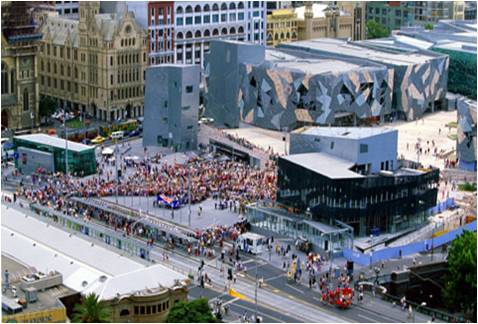
PROJECT: Federation Square
LOCATION: Melbourne, Australia
BUILDING TYPE: Recreational/Cultural, Commercial
ARCHITECTS: Donald L. Bates and Peter Davidson
CATEGORY: Urban renewal/Brownfield development
YEAR: 2002
AREA: 10 acres
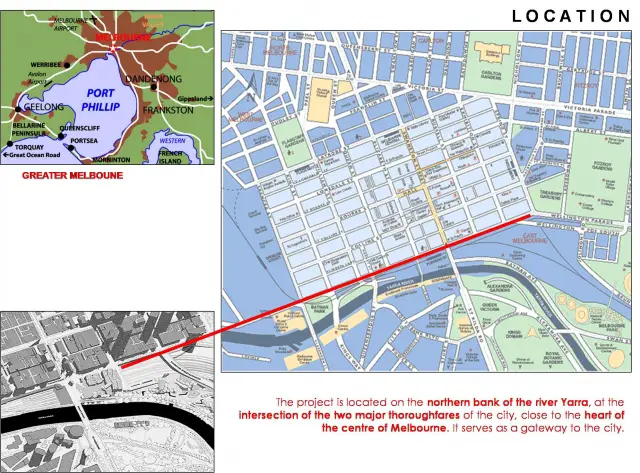
ACCESS:
The metro trains, the Tram network and the Yarra River together provide a strong link to the site for the Melbournians.
The Square is conveniently accessed both by pedestrians from flinders station, the tram stops and the river and the vehicles from the two thoroughfares along the site.
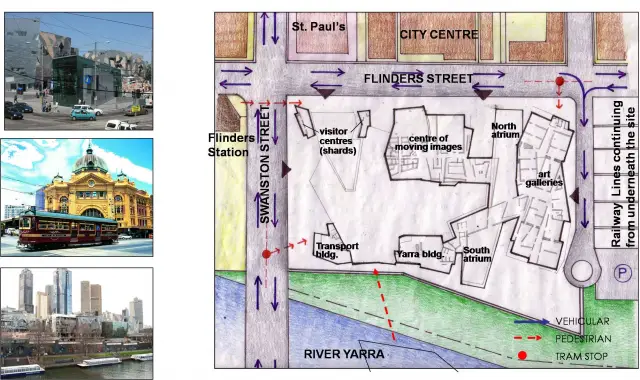
TRANSIT:
Connectivity of the site is indicated by the multitude of metro and rail lines that pass through the Flinder’s Street station by the site.
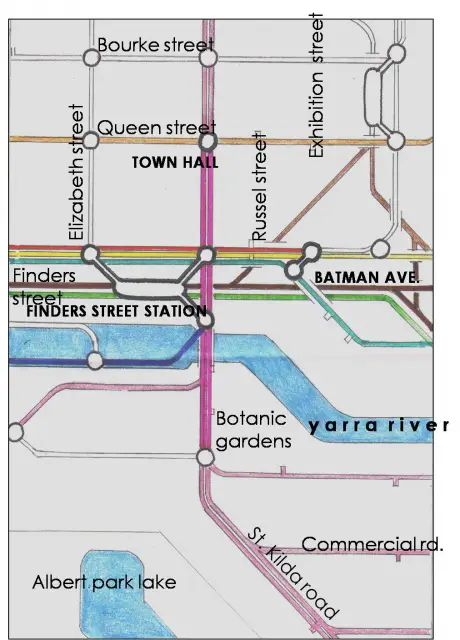
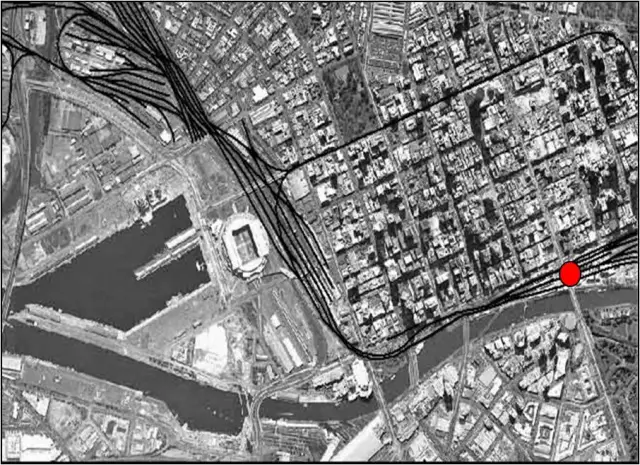
LAND USE PATTERN:
Federation Square is familiar as a public building because it under-invests in floor area and over-invests in building quality.
A grand square joins seamlessly to the surrounding streetscape at Swanston Street.
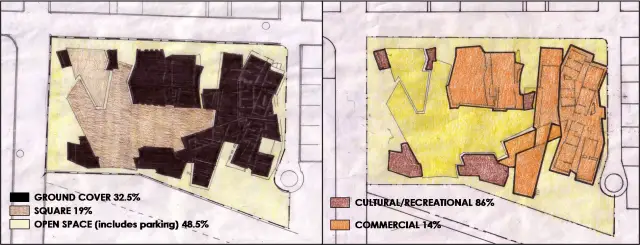
It is a purely cultural and commercial facility with a complete absence of residential land use.
The federation square conforms to the reputation of Melbourne as a culturally vital city.
CONCEPTION:
The development of Federation Square began in the mid 1990s as part of the Jolimont Rail Yard rationalization project that reduced the railway lines running parallel to the Yarra River from a total of 53 lines to 12.
The Government of the state of Victoria and the Melbourne City Council looked at the concept of developing a square over the rail lines and bringing down two universally disliked buildings called the ‘Gas and Fuel’ towers, that stood as a physical and visual divide between the city and its river.
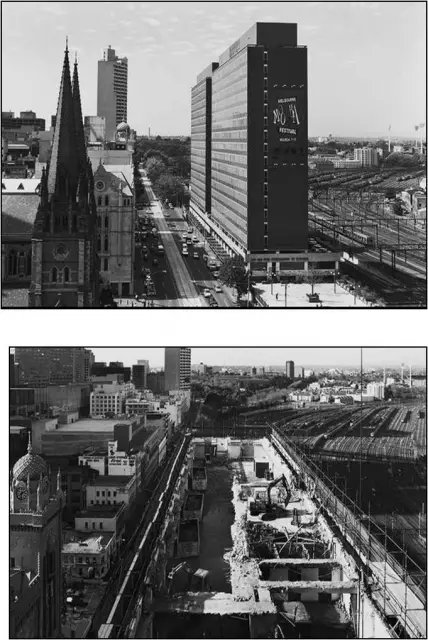
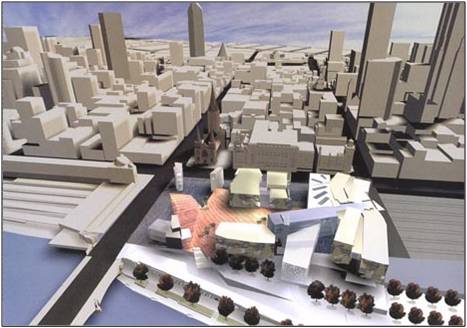
Conceived as a public civic centre and meeting place, the Federation Square links the city’s central business district (CBD) north of the Yarra River to the river itself and the gardens and parklands across.
ISSUES:
For decades the Jolimont rail yards have been an unsightly scar on the face of central Melbourne, cutting it off from the Yarra River. But now, Federation Square has been built on a deck over the top of these rail yards removing this sight from the city scape.
The construction of the deck beneath the Square is understood to be the largest expanse of railway decking ever built in Australia.
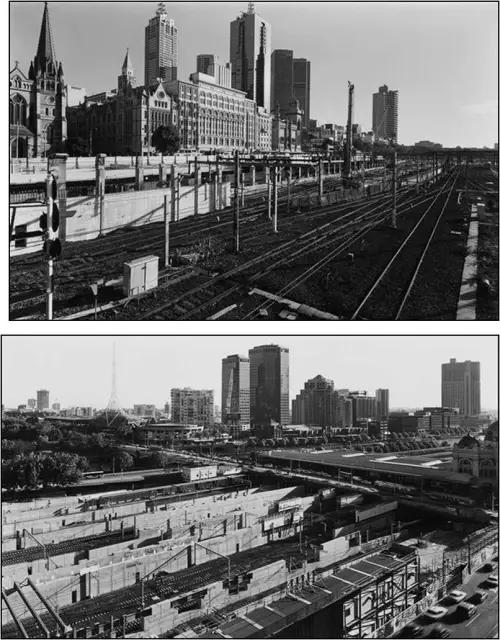
THE DECK:
The deck is supported by over 3,000 tonnes of steel beams, 1.4 kilometres of concrete ‘crash walls’ and over 4,000 vibration-absorbing spring coils and rubber padding.
The deck is designed to support some of the most sensitive uses imaginable – galleries, cinemas, and radio and television studios – and it needed to isolate them from vibration and noise.
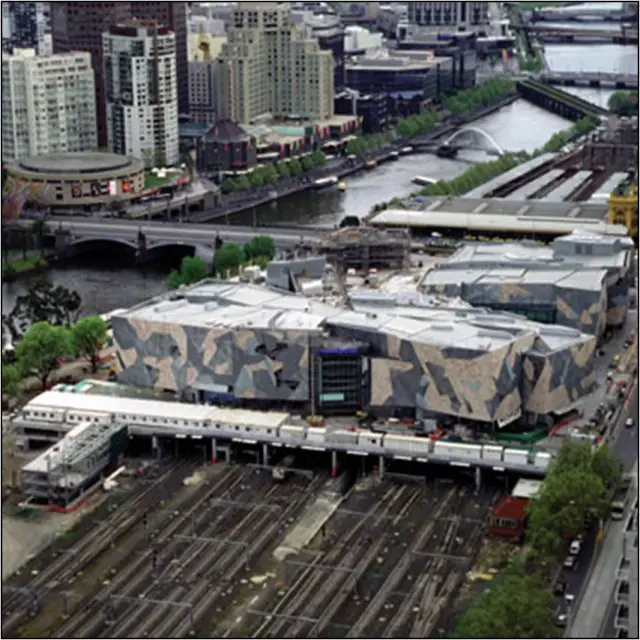
THE FRACTAL TECHNOLOGY:
The building represents the need for a common man to address public space as something, which generates variety and breaks out of the familiar.
Sandstone, zinc and glass have been used as cladding, structured within a triangular grid.
The modular system uses 5 single triangles to make up a self-similar larger triangular panel. Five panels following the same geometrical logic are joined together to create a mega panel that is mounted onto a structural frame.
The fractal façade system allows for individual buildings of the square to be differentiated from each other while simultaneously maintaining an overall coherence.
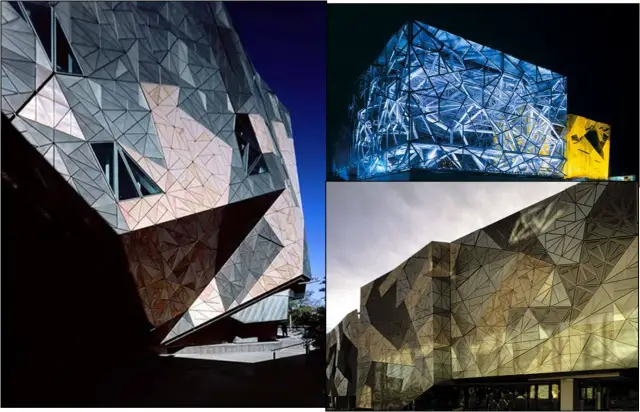
Façade panel comprising five tiles:
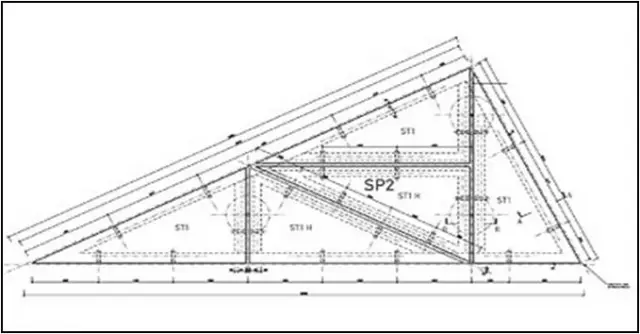
LABRYINTH :
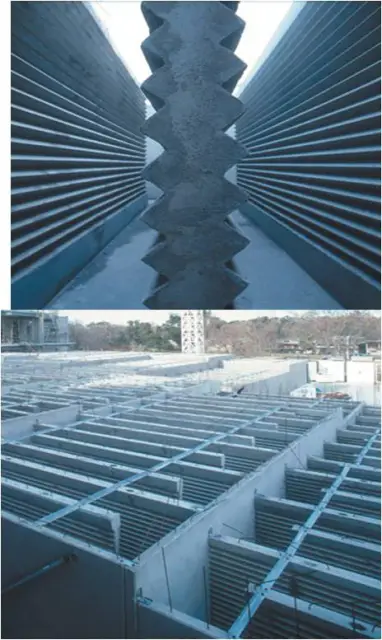
Maze of zig-zag corrugated concrete walls is a unique passive climate control system for the glazed atrium’s north and south sections. Zig-zag profile doubles the cooling capacity.
Spread over an area of 40×40 metres, the labyrinth is positioned beneath the civic plaza and above the deck over the railway, using a space that would have otherwise been unoccupiable.
It simultaneously provides support for the plaza deck slab.
Cool air is pumped through the labyrinth’s cells at night, which in turn cools the concrete walls. By day, air is again pumped through the cells, this time being cooled by the concrete. In winter the labyrinth’s thermal mass maintains an inherent warming potential, which will be supplemented as required.
The system directs air to the atrium, introduced at floor level, dispersed by use of a low-velocity displacement system.
Equivalent to conventional air conditioning but using one tenth of the energy consumption.
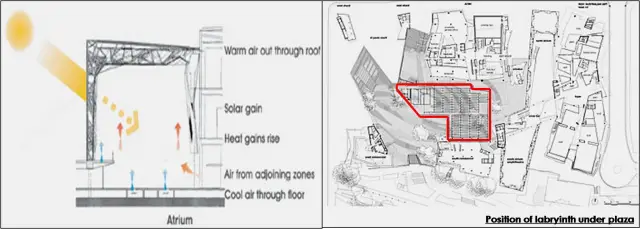
THE SQUARE:
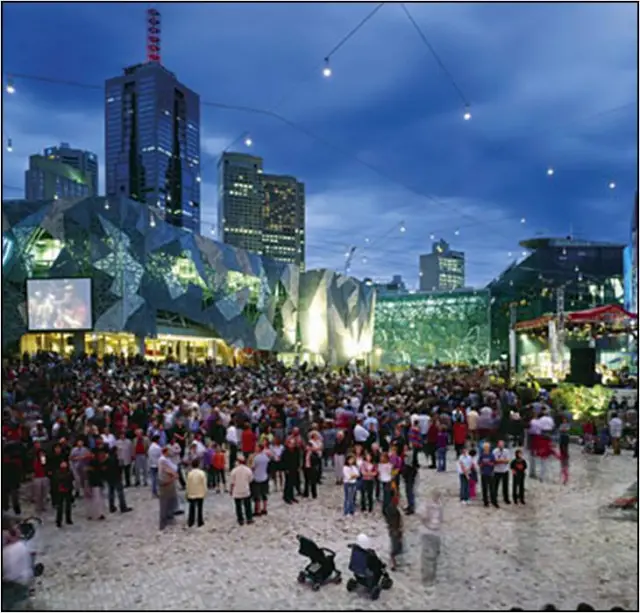
The square is the civic and spatial component, establishing connections with the diverse context of the city and the surrounding urban and riverside landscape.
It opens to the surrounding streetscape and rises up one level towards the east, providing entry at an upper level to further buildings.
To distinguish it from the city’s existing pavement, the square was surfaced in hand-laid (approx. 500,000) cobblestones of variegated colored Kimberley sandstone.
The sandstone paving has been laid in a patterned design. It comprises a series of overlapping stone tablets inlaid with layers of typographically scaled and interwoven texts.

The Federation Square has re-covered a ground and folded it back to the city
The design’s geometry allows for a vast array of configurations and arrangements, from the largest scale public gathering of up to 15,000 people to intimate sites of relaxation and contemplation.
ATRIUM:
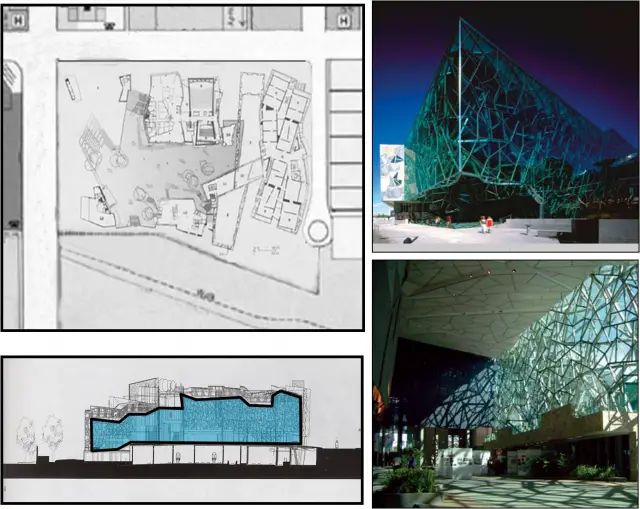
The atrium is a unique covered public space which provides a complement to the open plaza.
Symbolic of a public street running through the site.
Continuously open and publicly accessible, the atrium is emblematic of federation square’s intended connection of city and river.
Interior volume-16 metres high and up to 20 metres across.
South atrium steps from the deck level over the railway down to the river side promenade offering transitional perspectives of the city beyond.
The deep space of this supporting frame acts as a thermal chimney, evacuating the build-up of hot air. the atrium space is conditioned by a passive-cooling system, using a low-level air displacement system to keep the atrium cooler than the outside temperature in summer.
To learn more, visit: Comparision Between Barbican Center, Federation Square, BatteryPark City & Jian Wai Soho
This presentation was created by: Meghna, Nivedita, Sunny, Ved (2005)

Leave a Reply
You must be logged in to post a comment.